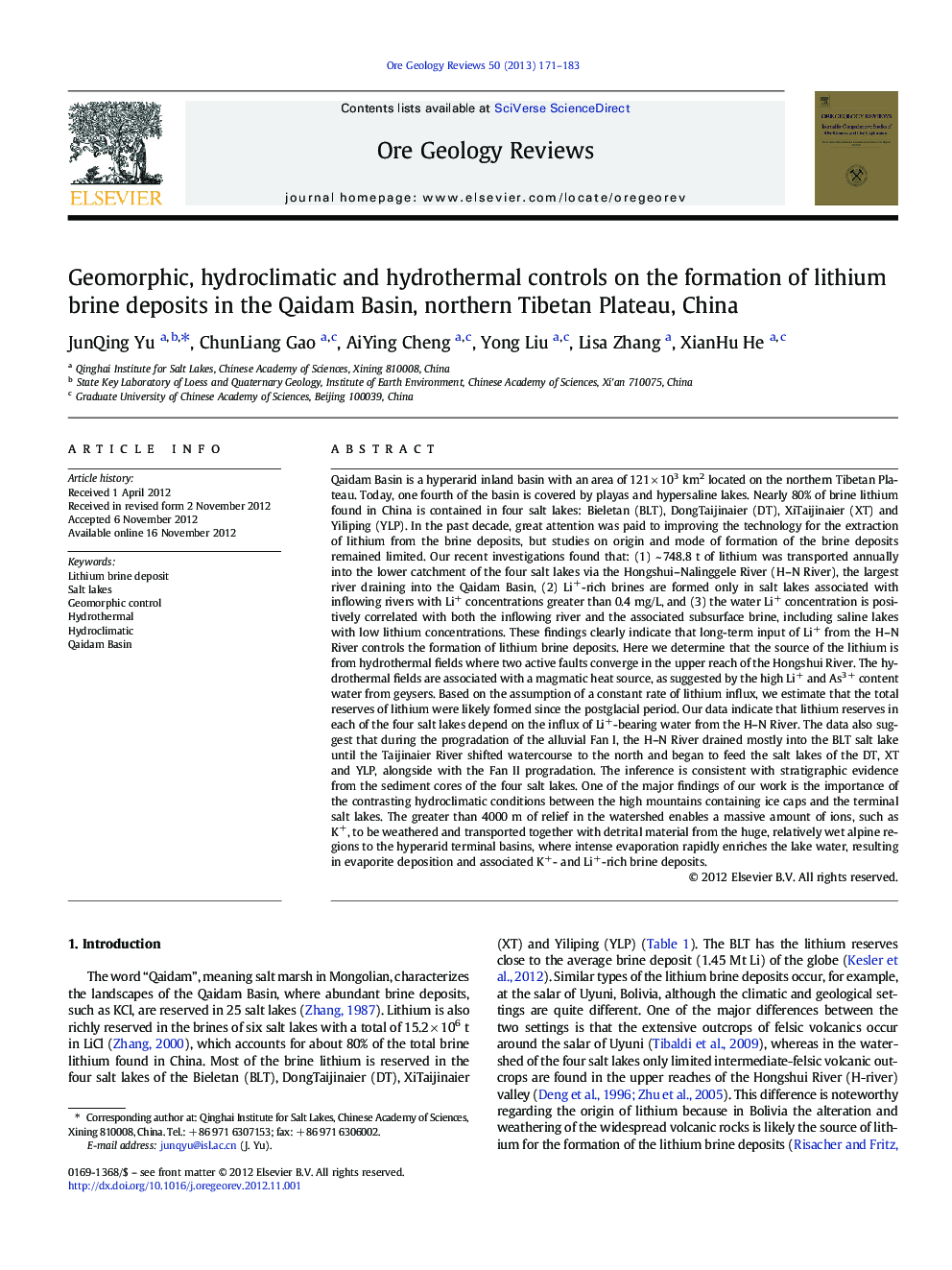| کد مقاله | کد نشریه | سال انتشار | مقاله انگلیسی | نسخه تمام متن |
|---|---|---|---|---|
| 4697585 | 1637253 | 2013 | 13 صفحه PDF | دانلود رایگان |
Qaidam Basin is a hyperarid inland basin with an area of 121 × 103 km2 located on the northern Tibetan Plateau. Today, one fourth of the basin is covered by playas and hypersaline lakes. Nearly 80% of brine lithium found in China is contained in four salt lakes: Bieletan (BLT), DongTaijinaier (DT), XiTaijinaier (XT) and Yiliping (YLP). In the past decade, great attention was paid to improving the technology for the extraction of lithium from the brine deposits, but studies on origin and mode of formation of the brine deposits remained limited. Our recent investigations found that: (1) ~ 748.8 t of lithium was transported annually into the lower catchment of the four salt lakes via the Hongshui–Nalinggele River (H–N River), the largest river draining into the Qaidam Basin, (2) Li+-rich brines are formed only in salt lakes associated with inflowing rivers with Li+ concentrations greater than 0.4 mg/L, and (3) the water Li+ concentration is positively correlated with both the inflowing river and the associated subsurface brine, including saline lakes with low lithium concentrations. These findings clearly indicate that long-term input of Li+ from the H–N River controls the formation of lithium brine deposits. Here we determine that the source of the lithium is from hydrothermal fields where two active faults converge in the upper reach of the Hongshui River. The hydrothermal fields are associated with a magmatic heat source, as suggested by the high Li+ and As3 + content water from geysers. Based on the assumption of a constant rate of lithium influx, we estimate that the total reserves of lithium were likely formed since the postglacial period. Our data indicate that lithium reserves in each of the four salt lakes depend on the influx of Li+-bearing water from the H–N River. The data also suggest that during the progradation of the alluvial Fan I, the H–N River drained mostly into the BLT salt lake until the Taijinaier River shifted watercourse to the north and began to feed the salt lakes of the DT, XT and YLP, alongside with the Fan II progradation. The inference is consistent with stratigraphic evidence from the sediment cores of the four salt lakes. One of the major findings of our work is the importance of the contrasting hydroclimatic conditions between the high mountains containing ice caps and the terminal salt lakes. The greater than 4000 m of relief in the watershed enables a massive amount of ions, such as K+, to be weathered and transported together with detrital material from the huge, relatively wet alpine regions to the hyperarid terminal basins, where intense evaporation rapidly enriches the lake water, resulting in evaporite deposition and associated K+- and Li+-rich brine deposits.
► Importance of contrasting conditions between wetter mountains and hyperarid basins.
► Long-term input of Li+ from H-N River controls the formation of Li brine deposits.
► Hydrothermal source of Li associated with magmatic heat source.
► Significance of geomorphic controls on the depositional system.
Journal: Ore Geology Reviews - Volume 50, February 2013, Pages 171–183
